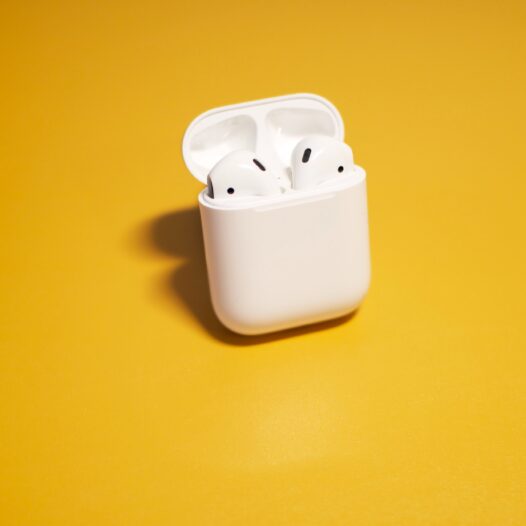One of the most awaited events in the world of technology is finally here. For those who don’t know, around September of every year, Apple unveils the newest addition to its iconic line of iPhones.
Last year, the event was held in October due to COVID-related delays. This year, however, the event is back on track, and, like every Apple event, it is super-hyped.
It’s debatable whether the hype is deserved. On the one hand, as its former CEO Steve Jobs explained in typical fashion, Apple “doesn’t ship junk.” It makes premium products especially renowned for their singular, elegant, minimal design.
But so do other manufacturers when it comes to their flagship, top-of-the-line devices. And that’s what the other faction bemoans: the products are overpriced symbols of status, marketed aggressively, almost fanatically.
Love it or hate it, publicity is publicity. Its ‘fanboys’ hold a reverence for its trademark aesthetics and ‘genius for innovation’ — a reverence we ordinarily reserve for art. Entire websites and YouTube channels are dedicated exclusively to covering its products.
And so, love it or hate it, many of Apple’s products will go down in history as iconic. Here are 7 of our favorites of the past decade.
1. iPhone 5S (September 2013)
Unlike its predecessor, the iPhone 5, the iPhone 5S did not change in design. Compared to its predecessor, the iPhone 4S, the iPhone 5 was slightly taller and thinner. The iPhone 5S looked identical except that it featured Touch ID — Apple’s beloved, highly reliable, and secure way to unlock your Apple device with your fingerprint. Apple has always been a proponent of privacy, and Touch ID was a big step in ensuring it.
2. iPad Pro (April 2021)
Apple released its first iPad in January 2010. The iPad was the smartphone and computer pioneer’s first 9.7-inch, tablet-sized device — kind of like a bigger iPhone. The iPad was a hit and eventually expanded into three different variants: iPad Air, iPad Mini, and iPad Pro. People still read, play games, and watch videos on their iPad, but the iPad Pro 2021 is a different animal altogether. It packs the same processor the latest MacBook has — the M1 chip, enabling content creators to sketch, design, edit, and render videos. On an iPad!
The newest iPad Pro is Apple’s most powerful yet — almost a computer. Almost. Because it lacks a mature operating system like macOS versions. And critics argue that’s always how it will be. Think about it: equipped with a mature OS, if the iPad Pro delivers whatever we expect from, say, the MacBook Air, we wouldn’t have any reason to buy the MacBook Air. That’s cannibalism.
3. iPhone 7 (September 2016)
Ahh, the infamous iPhone 7. Only Apple could make a phone without a headphone jack and market it as a value-add. Removing the 3.5 mm audio jack — something we rely on daily — wasn’t the first time Apple angered people by killing stuff. But it remains the most disputed in recent memory. Apple not providing a charging brick with the iPhone 12 comes close.
Apple cited the need to innovate as the reason for removing the jack and decreasing e-waste for removing the charger. Although, many argue that Apple, by removing both, left us no choice but to buy its wireless headphones and chargers.
Although, to be fair, it did force the market to innovate, as other manufacturers also removed the jack and developed their very own wireless headphones. But why not give us a choice?
4. AirPods (September 2016)
Well, it worked. The wireless pair of headphones is one of Apple’s most successful and recognizable products. So much so that any white pair of wireless headphones extending down to the lobes are referred to as ‘clones.’ So much so, wireless is now the norm, not the exception.
AirPods quickly and seamlessly connect to your Apple devices. They can be controlled by gestures and also offer Siri support. An upgraded version, called AirPods Pro, also offers active noise cancellation (ANC). Sigh.
5. Apple Watch Series 6 (September 2020)
Apple unveiled the first Apple Watch in September 2015, and it instantly became the most popular wearable device of the year. The Watch was a sensation because it was technology from the future. Not because it projected holograms (hopefully, this year), but because it revolutionized personal health.
Every year, it was crammed with a new, powerful processor and more and more health sensors to make more and more accurate measurements. Last year, in fact, in the light of the pandemic, Apple also equipped it with a sensor for monitoring blood oxygen levels. Although, besides checking vitals, the Watch is also handy for checking messages, listening to music, and dialing emergency, among other ‘smart’ use-cases.
6. iPhone X (September 2017)
As mentioned, Apple has a history of killing stuff. Compared to its predecessor (5S), the iPhone 6 was not just taller and broader, but it also had rounded edges. A significant design shift. But it did continue to feature Apple’s Touch ID…until Apple unveiled the iPhone X in November 2017.
In 2017, Apple introduced Face ID — another reliable and secure system for biometric authentication that unlocks devices with facial recognition instead of fingerprint recognition. Eliminating Touch ID allowed Apple to make a phone that’s just-screen.
Face ID is incredible. It is quick, extremely secure, and works even in the dark. However, unlike its competitors, Apple deployed Face ID to replace Touch ID instead of complementing it. A tactic that has backfired in a pandemic, when our faces are covered with a mask.
7. M1 MacBook Air, Pro, and Mac Mini (November 2020)
In 2020, Apple announced its decision to transition from Intel’s x86 microprocessors to its own ARM-based microprocessors for its MacBook and Mac line of computers. For the layperson, Apple decided to build a microprocessor of its own instead of using one developed by Intel. The transition certainly has its benefits: since Apple would have complete control, it would achieve far tighter integration and optimization between its hardware and software.
Apple made bold claims. And boy did they deliver. Okay, so the MacBook Air may not last for over 15 hours, as advertised by Apple. But the products are by far the most powerful and yet the most efficient computers Apple has recently released — their finest in a long, long time.
Let’s not forget that the M1 powers the most low-end of MacBook computers and Mac Mini systems. If that’s what Apple has delivered on their first iteration, what do we await in those that follow, in even more powerful computers?
Closing thoughts
There are honorable mentions, such as Apple Pay, Apple Music, and Apple TV, but are they as iconic as the seven above? Perhaps. Perhaps not.
Maybe today, we will see an addition to the list. Today, Apple is rumored to unveil the new iPhones: iPhone 13, iPhone 13 Pro, iPhone 13 Pro Max, and iPhone 13 Mini. Then, a new Apple Watch, Series 7, and new AirPods. You can watch the event on Apple’s website or tune in to the live stream on YouTube at 10 a.m. PDT.

